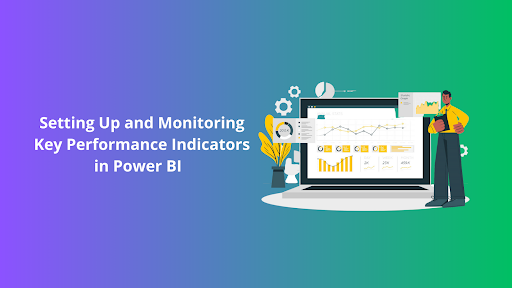Setting Up And Monitoring Key Performance Indicators In Power Bi
Microsoft Power BI has become a potent tool for data visualisation and analysis. Monitoring Key Performance Indicators (KPIs) is important to data-driven decision-making. These indicators offer insightful information about an organization’s performance and support strategic decision-making. In this blog, we’ll explore how to set up and keep track of Power BI KPI. We’ll also look at how Microsoft Power BI Training may help you become more adept at using KPIs to motivate wise decisions.
Understanding Key Performance Indicators (KPIs)
Let’s quickly establish KPIs before we get started with Power BI. Key performance indicators are quantitative measurements that assess a company’s performance in reaching particular corporate goals. KPIs give a clear insight into performance patterns and aid in locating problem areas. They range from financial measurements to customer satisfaction scores, depending on the aims and sectors they are used in.
Leveraging Power BI for KPI Tracking
Power BI provides a user-friendly framework for producing interactive visualisations, reports, and dashboards. You can monitor performance measures in real-time by setting up KPIs in Power BI, giving you the confidence to make data-driven choices.
- Connecting your data sources to Power BI is the initial step. Databases, spreadsheets, internet services, and more may fall under this category. After importing your data, you can start creating visualisations and KPIs.
- You may define KPIs with Power BI based on your company’s objectives. Decide the statistics to gauge success, such as revenue, customer retention rate, or lead conversion rate. Set a goal value that corresponds to your desired performance level after that.
- Power BI provides a variety of visualisation choices to depict your KPIs efficiently. A common option is the “KPI Indicator” visual, which shows the actual value of the measure together with a graphic that shows whether you’ve achieved the goal (e.g., a green checkmark) or not (e.g., a red “X”).
- Consider including supplementary graphics, like trend lines, historical data comparisons, and drill-through reports, to give meaning to your KPIs. These components enhance your KPI dashboards and allow you to examine the variables affecting your performance indicators.
- After creating your KPI dashboards, you may distribute them to stakeholders and coworkers. You can publish your findings to the Power BI service or embed them in other programs using Power BI. The dashboards are then accessible to collaborators, who can subsequently interact in real-time with the data.
The Role of Microsoft Power BI Training
While Power BI makes setting up KPIs simpler, Microsoft Power BI Training offers in-depth insights into realising the full potential of the technology. The advantages of training are as follows:
- You thoroughly grasp Power BI’s capabilities and functions through training. This information enables you to use cutting-edge features to create effective KPI dashboards.
- Training helps you make the best visualisation choices to communicate your KPIs successfully. You’ll discover how to produce visualisations that speak to your audience and offer understandable insights.
- Thanks to the advanced analytics techniques covered in Power BI Training, you may examine trends, correlations, and forecast insights in your KPI data.
- Learn how to improve your KPI dashboards’ performance, responsiveness, and user experience. You can build dashboards that load quickly and are available on various devices with the aid of training.
- To properly share your KPI dashboards with stakeholders and work together on data-driven choices, the training covers sharing and collaboration tools.
Conclusion
Businesses may use Power BI KPI setup and monitoring to make informed choices based on the most recent information. As you investigate the world of KPIs and data analytics, consider the value of Microsoft Power BI Training. Training increases your platform proficiency while equipping you with the skills necessary to create practical KPI dashboards, recognise data trends, and collaborate effectively. By combining the capabilities of Power BI with the knowledge from training, you will be well-equipped to achieve business success through data-driven decision-making.


